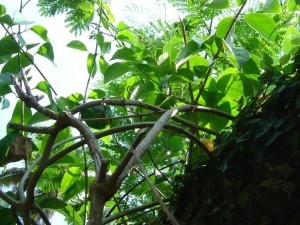What you can do to protect yourself against poison ivy, oak, and sumac

Poison ivy is one of the most common allergies in the United States - it is believed that only 15 percent of people are immune to it. Workers who spend a lot of time outside need to know how to protect themselves against it. The United States Forest Service reports that about 10 percent of its lost time is due to poison ivy, poison oak, or poison sumac.
Poison ivy is most common throughout North America and especially east of the Rocky Mountains. It has a characteristic three-leaf pattern of growth and can appear as a shrub or a vine. Workers should look for the leaves of three, hairy vines growing on trees and white berries.
Poison oak is most common west of the Rockies and looks quite a bit like poison ivy. The difference is that the leaves of this plant are ridged or lobed and are similar in appearance to oak leaves. Poison sumac has thin, narrow leaves in sets of seven to 13 but is far less common than poison ivy or oak.
The best way for workers to protect themselves against these plants is by being vigilant. Outdoor itch relief and prevention products can also help. Supervisors and other workers should show new staff members how to spot the dangerous plants. If contact is made, most commercial-grade soap will remove the urushiol that causes the characteristic rash and blisters. It is important to use cold water to remove the oil, as hot water can open your pores and let the oils in faster.
There are some creams and oils that can act as a barrier, capable of preventing the oil from affecting the skin if they're applied before a worker touches the plant. Cleansers are also available that can help remove the toxic oil before the rash develops if used soon enough after touching these plants.
When contact is made with poison ivy, oak, or sumac, the affected areas should be washed and any clothes that might carry the oil need to be cleaned thoroughly as well. The oil can linger for years on objects that have not been properly washed, so it is important to be thorough with any materials that came into contact with the plants.
Once the affected skin has been cleaned of the plants oils, the rash or blisters are not a contagious condition. Even if a worker has the characteristic reaction due to touching the plants, the only way to spread that reaction from person to person is if there are still plant oils on skin or clothing.


